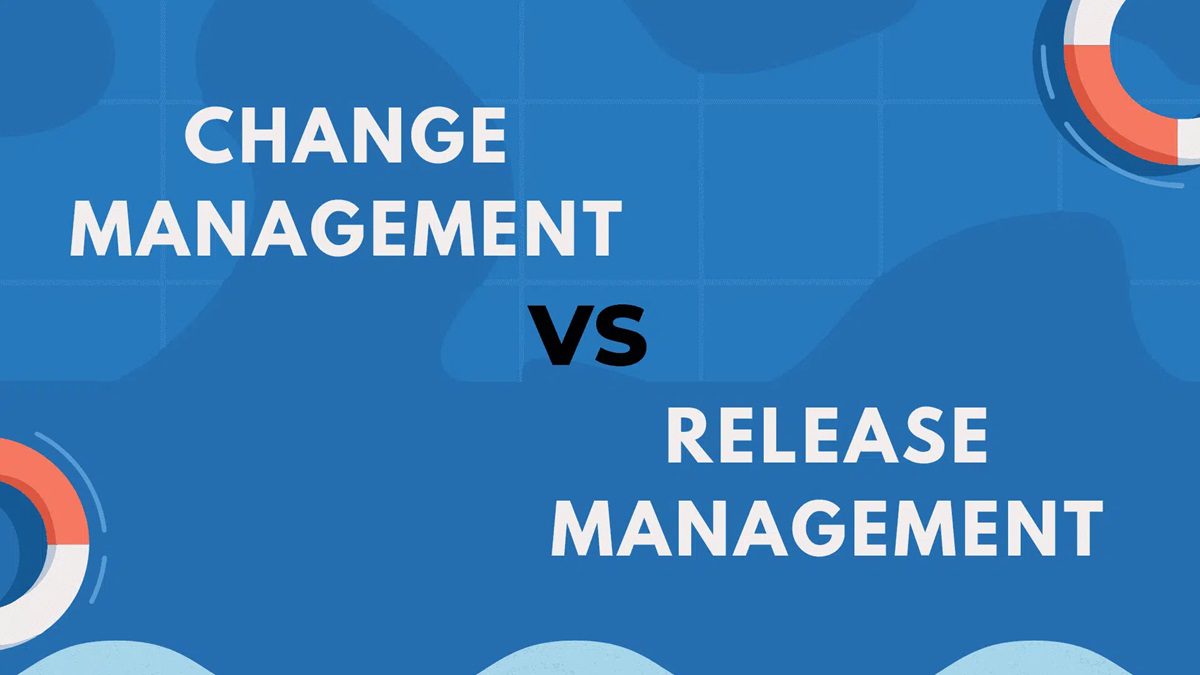ITIL Certification: Management of IT services is an integral component of any successful organization, as it ensures high-quality and dependable IT-related services are delivered without interruptions or failure. ITIL accreditation in Australia has seen immense popularity, with people learning the necessary skills and knowledge for success in this area. Particularly confusing components of ITIL include Change and Release Management processes – which are essential to ensure any IT service changes are completed efficiently without disruptions.
This article will give you an in-depth knowledge of two critical principles of ITIL Certification and their roles and significance. They are Change Management and Release Management. Once you finish reading this piece, you will possess a comprehensive grasp of both concepts that will allow for their application within the Australian IT sector.
Understanding ITIL and Its Significance in Australia
What Is ITIL?
ITIL is an approach and set of practices used in IT Service Management (ITSM). ITIL provides:
- A structured planning method.
- Delivering, managing.
- Improving IT service delivery in any organization – not restricted to one particular sector but applicable across the board.
ITIL in Australia
ITIL certification has quickly gained widespread acclaim across various industries in Australia. Businesses and government agencies alike have adopted it to enhance the quality of IT Service Management. Furthermore, demand for certified professionals with this credential has skyrocketed, making ITIL certification extremely desirable among IT professionals in Australia.
Australian organizations recognize the value of ITIL certification to secure and optimize IT services supporting business goals while offering exceptional customer experiences.
Understanding Change Management
Establishing Change Management Strategies
Change Management is an integral component of ITIL certification that ensures changes are managed effectively to IT systems, services, and infrastructure without disruptions or negative repercussions for business operations. Change Management’s primary objective is to ensure modifications are approved, planned for implementation efficiently, and implemented without adversely impacting businesses.
Importance of Change Management in ITIL
Change Management is an integral element of ITIL for a variety of reasons. These include:
- Risk Mitigation: By employing the structured Change Management process, organizations can identify potential risks that threaten IT service reliability and stability and create strategies to mitigate them. This ensures that changes don’t adversely impact them.
- Reduce Interruptions And Downtime: To reduce interruptions to services and downtime, change management is vital to implement changes at an ideal time, often when there will be minimal impact.
- Compliance: Compliance ensures that any modifications meet regulatory and standards requirements, making compliance essential to success in industries with stringent regulation requirements.
- Documenting Change Management Requirements: Documenting changes helps track and audit them over time. This ensures their continual implementation is kept on record and monitored appropriately.
Understanding Release Management
Release Management Framework and Strategies
In ITIL certification, Release Management involves planning, scheduling, and controlling the release (new or modified service) in an actual environment. Its purpose is to ensure any new services or modifications of existing ones occur smoothly without disrupting existing operations.
Importance of Release Management in ITIL
ITIL considers Release Management to be an essential element for many reasons:
- Smooth Deployment: To ensure an uninterrupted deployment process for new or modified services to existing ones. This reduces any service disruptions.
- Communication and Coordination: Release management involves effective collaboration among teams and stakeholder groups to ensure that releases run smoothly.
- Test and Validation: Test and validation involve conducting extensive tests and checks on releases to ensure they comply with established performance and quality criteria.
- Release Management: Release Management provides an effective means of keeping track of different versions of services, making it more straightforward to monitor and adapt as changes occur.
Main Differences between Change Management and Release Management
Release Management and Change Management are integral parts of ITIL certification; each has goals, scopes, and procedures that must be understood for effective IT Service Management. Let’s examine their differences closely.
1. Goals and Objectives:
Change Management: The primary purpose of Change Management is to implement changes with as few disruptions and risks as possible to maintain optimal IT service delivery levels. Change management involves reviewing, authorizing, and overseeing IT service modifications.
Release Management: Release Management’s primary goal is to ensure the smooth implementation of new services or modifications to existing ones with minimum disruption to operations through testing, planning, and coordination of releases.
2. Scope:
Change Management: Change Management encompasses any modifications to IT services systems, infrastructure, or the system itself. It oversees the entire change process – from initial requests through approval and implementation.
Release Management: Release Management is focused on the flow of new or modified products or services into the real-world environment and oversees their planning, deployment, and distribution.
3. Timing:
Change Management: Changes may be implemented at any time and without restriction or timeframe; they only become effective once management approves.
Release Management: Release Management adheres to an established schedule and release schedule, and layoffs are scheduled and performed at specific times to avoid interruptions or delays in service delivery.
4. Stakeholder Involvement:
Change Management: Change management involves numerous stakeholders, from requestors of changes to CAB members and IT personnel responsible for implementation.
Release Management: Release Management involves coordinating between various teams. Testing, development deployment, and operations teams. All this is done while communicating with business partners.
5. Documentation:
Change Management: Documenting changes, assessments and approvals, and implementation plans is an integral component of Change Management.
Release Management: This requires documentation of schedules, release plans, testing findings, and deployment methods for release management activities.

How ITIL Certification Benefits Australian Professionals?
Gaining ITIL accreditation in Australia can be highly advantageous for IT professionals. Here are a few advantages associated with an ITIL certificate in Australia:
- Career Advancement: ITIL certification can enhance your understanding and abilities regarding IT service management, making you more employable for higher-paying jobs.
- Increased Employment Opportunities: Many Australian companies are interested in ITIL certifications and prefer to hire ITIL-certified specialists to fill IT services management positions.
- Enhance Service Quality: With ITIL expertise and best practices, professionals can contribute towards providing top-quality IT services that exceed customer expectations. This is essential in satisfying their demands.
- Global Recognition: ITIL Certification allows Australian employees to operate globally and collaborate with experts worldwide.
- Higher Earning Potential: Certified ITIL specialists typically earn higher wages than non-certified ITIL specialists in Australia.
- Contributing to Organizational Success: ITIL knowledge allows professionals to contribute significantly to an organization’s success by ensuring the efficient delivery of IT services to business goals.
Conclusion
ITIL provides two fundamental procedures for IT service management and change management:
- Change Management
- Release Management
Both are essential to successful support delivery. Both focus on managing changes that affect IT processes; at the same time, Release Management facilitates seamless deployment of new services or changes without disruptions to operations. Knowing their differences is essential to successful support delivery both locally and worldwide. At the same time, Change Management deals with controlling changes made to these processes by controlling their impact. Release Management guarantees their implementation without interruptions to service or process continuity.
ITIL certification in Australia has become more crucial as businesses look for ways to streamline their IT service management processes. ITIL-accredited professionals in Australia can gain advancement opportunities while contributing to providing superior IT services that benefit both their customers and employers alike.
Frequently Asked Questions
Does ITIL certification apply in Australia for IT professionals?
ITIL certification isn’t mandatory, but it can hugely benefit Australian IT professionals working in Australia. Not only can it open up doors for career growth and efficiency improvement within IT services, but it can also help employees advance in their roles more quickly.
What are the criteria required to obtain ITIL accreditation in Australia?
An ITIL Foundation certification has no prerequisites; however, higher-level certifications may require prior ITIL experience and knowledge.
How will ITIL certification impact job opportunities in Australia?
ITIL certification could dramatically impact Australian job prospects. Many companies prefer hiring certified ITIL professionals for IT service management roles, creating more excellent career prospects and higher wages.
Can ITIL certification for Australia be acquired online?
Numerous organizations and training providers provide ITIL certification online, making it accessible to professionals across Australia.







